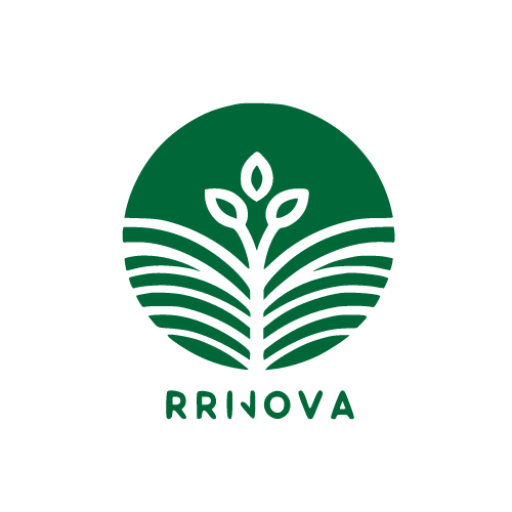
- Case Studies
Case Study: Digital Education Transformation and Inequality in Italy

Italy entered the 2020s with long-standing regional education gaps and modest digital readiness. Pre-pandemic OECD evidence showed many teachers had limited formal preparation in ICT for teaching, signaling capacity constraints when schools would later move online.
Major developments (2020–2025)
Emergency shift to remote learning (2020–2021). The Ministry issued Linee guida per la Didattica Digitale Integrata (DDI) to formalize hybrid/online instruction, while schools scrambled to provide devices and platforms. Global monitoring by UNESCO documented severe access gaps that Italy also experienced among low-income and southern households.
Recovery investments (2021→). Via NextGenerationEU/PNRR, Italy launched Scuola 4.0 to convert ~100,000 classrooms into technology-rich spaces and modern labs; complementary connectivity programs (Piano Scuole Connesse/Italia a 1 Giga) target ≥1 Gbps to ~10,000 school sites by 2026.
EU framework. The EU Digital Education Action Plan (2021–2027) set a shared agenda on infrastructure, teacher skills, and inclusive digital learning—informing national plans and Erasmus+/RRF funding streams.
- Learning outcomes & inequality signals (2023–2025).
PISA 2022: Italian 15-year-olds scored ~OECD average in maths (471), above average in reading, below in science, with declines vs 2018—underscoring learning loss and structural gaps.
INVALSI 2024–2025: Large territorial divides persist; far fewer Mezzogiorno students reach baseline maths proficiency; implicit dispersion remains elevated.
Early school leaving fell toward EU targets (≈9.8–10.5% range in 2023–24) but remains higher among foreign-born youth and in southern regions.
Pilot on classroom AI (2024). Italy began small AI-assisted teaching pilots to boost digital skills, amid debate on teacher capacity and classroom phone bans.
Key stakeholders
National: Ministry of Education and Merit (MIM); Invalsi (national assessments); Infratel/Ministry for Innovation (school broadband); regional authorities; teacher unions; school leaders.
EU/international: European Commission (DEAP/RRF); OECD (PISA/TALIS); UNESCO (GEM/ethics).
Civic/NGOs: Save the Children, Con i Bambini (monitoring dispersion and educational poverty).
Policy responses (national, regional, international)
National (PNRR “Scuola 4.0”). Classroom modernization, digital labs, teacher upskilling; parallel Piano Scuole Connesse to deliver ≥1 Gbps to schools (services free for several years post-activation).
Connectivity at scale. Italia a 1 Giga targets households and public sites; government notes ~2026 completion horizon for school/hospital ultra-broadband lots.
EU/Regional. Digital Education Action Plan actions on infrastructure, educator skills, and inclusion; Erasmus+/RRF support for devices, platforms, and teacher training.
International guidance. OECD and UNESCO reports frame equity-by-design, evidence use, and monitoring for digital education.
Critical evaluation of outcomes
What’s working
Infrastructure & equipment ramp-up. Formal programs for 1 Gbps school links plus Scuola 4.0 create the physical preconditions for digital learning; Italy’s use of RRF accelerated upgrades that had lagged pre-2020.
Assessment transparency. INVALSI and PISA provide granular visibility into learning loss and territorial divides, enabling targeted policy.
Dropout trend improvement. Early school leaving moved closer to the EU target post-pandemic, though heterogeneity persists by region and migrant status.
Where gaps persist
Territorial inequality remains large. Invalsi and ISTAT show lower proficiency and higher dispersion in the South/Islands; educational poverty overlaps with child poverty hotspots.
Teacher capability and workload. OECD evidence indicates many teachers lacked ICT preparation in initial training; sustained professional learning is uneven across regions/schools.
Last-mile inclusion. Connectivity/device programs don’t automatically translate into equitable use at home; disadvantaged families still face access and support barriers. UNESCO flags this as a global risk mirrored in Italy’s low-income communities.
Societal, economic, and global implications
Human capital & productivity. Persistent skill gaps risk entrenching regional productivity divides and youth NEET rates despite cyclical labor improvements. (Inferred from ISTAT education and outcome indicators.)
Social cohesion. High dispersion and unequal digital access correlate with higher dropout risk and lower civic/financial literacy—pressure points for democratic participation.
Global relevance. Italy’s PNRR-backed “infrastructure + pedagogy + assessment” approach aligns with international best practice; its remaining equity gaps offer lessons for other countries scaling digital schooling after COVID-19.
Recommendations (evidence-based, practical)
Equity-weighted funding formula (Mezzogiorno priority).
Tie Scuola 4.0 and connectivity disbursements to a needs index (SES, migrant status, rurality, prior outcomes), with minimum service guarantees (devices, tutoring, homework clubs) and public dashboards by municipality. Use INVALSI/ISTAT to target and track.National teacher digital-pedagogy standard with micro-credentials.
Require a baseline digital pedagogy micro-credential for all teachers (new and in-service), mapped to OECD guidance; fund release time and coaching teams within schools to ensure uptake beyond one-off courses.Home-access guarantee for disadvantaged students.
Expand voucher/device-loan schemes and family tech support hotlines in low-income areas so school-level digital investments translate into at-home learning capacity—addressing UNESCO’s “last-mile” gap.Evidence-driven tutoring & extended learning.
Scale small-group tutoring (after-school/weekends) in provinces with low INVALSI proficiency; publish RCT-style evaluations annually to reallocate funding toward proven models.Assessment-to-action loop.
Link INVALSI/PISA findings to automatic triggers (e.g., if Grade-10 maths baseline <50% in a province, unlock targeted funds, staff supplements, and leadership support). Keep results prominent with a national open data portal.Responsible AI pilots with teacher-in-the-loop.
Restrict classroom AI pilots to opt-in schools that publish model cards, DPIAs, and bias audits; embed teacher training and student data-protection by default before scaling.
Selected sources
Scuola 4.0 / PNRR (Italy & EU project pages).
School connectivity programs (Infratel/MITD). (infratelitalia.it)
EU Digital Education Action Plan (2021–2027). (European Education Area)
OECD TALIS & digital-skills prep; PISA 2022 results. (OECD)
INVALSI 2024/2025 results & territorial gaps. (invalsi-areaprove.cineca.it)
ISTAT education levels & early leaving 2024. (istat.it)
UNESCO—digital divide in distance learning; GEM 2023. (UNESCO)
Reuters—AI classroom pilot (2024). (Reuters)
Related Posts
Your Partner in Real Innovation
We design and develop pioneering projects, conduct meaningful research, and build products that shape the future.


